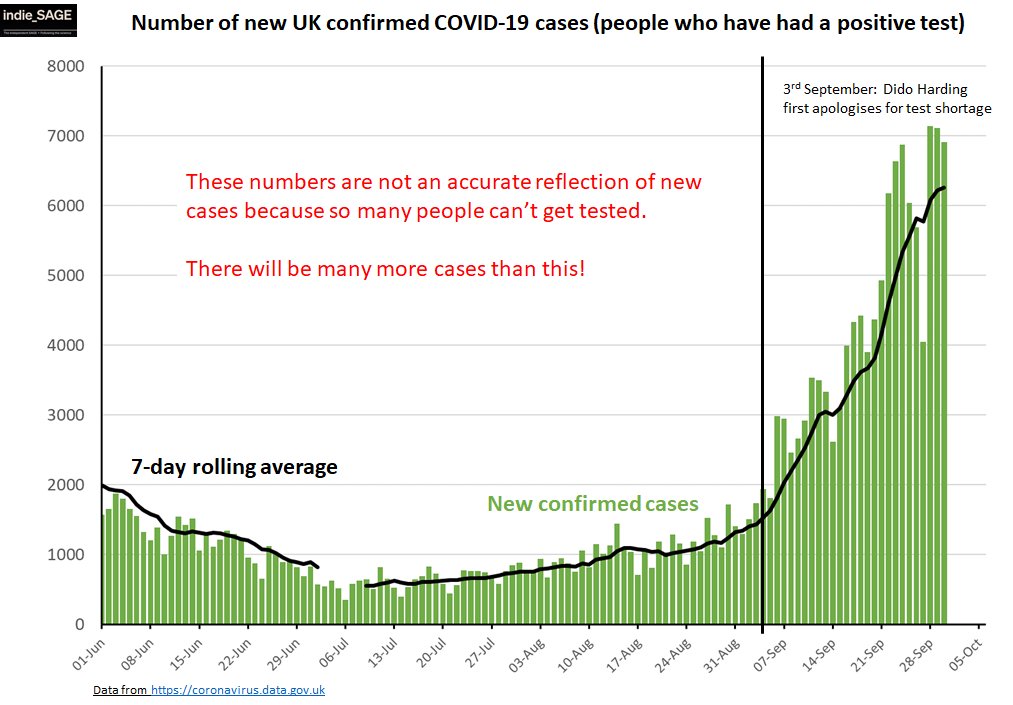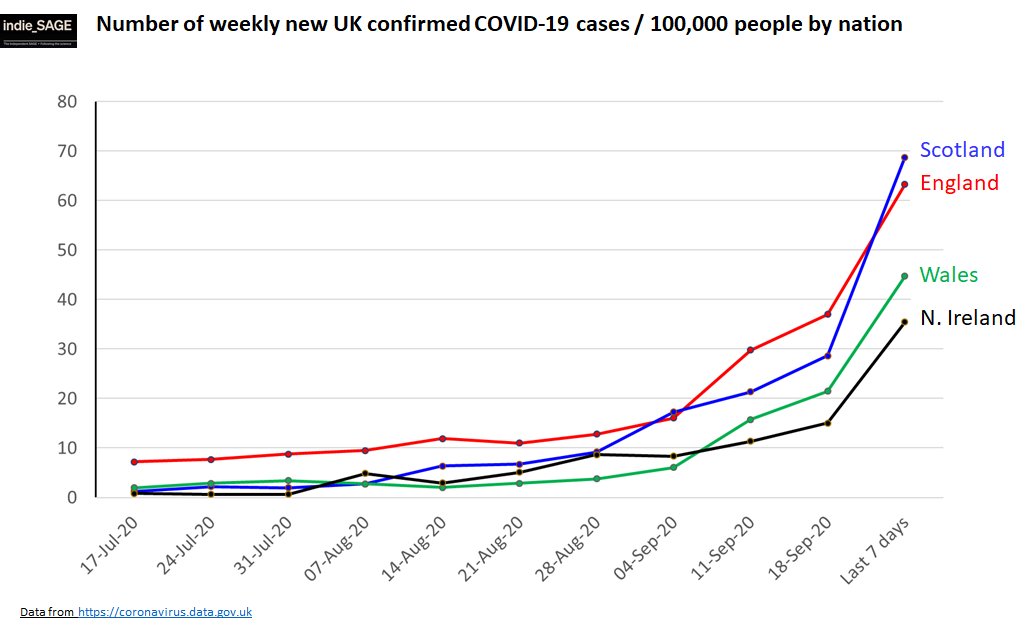
THREAD: personal thoughts on tiers, circuit breakers, restrictions, R (ENGLAND)
My calcs based on SAGE notes (bit.ly/3lTraqv) & SpiM paper on circuit breaker (bit.ly/2T0p6AA)
TLDR: 2 week circuit breaker NOW, then enough restrictions/FTTIS to keep R below 1
My calcs based on SAGE notes (bit.ly/3lTraqv) & SpiM paper on circuit breaker (bit.ly/2T0p6AA)
TLDR: 2 week circuit breaker NOW, then enough restrictions/FTTIS to keep R below 1
Cases are rising across England. SAGE estimate R i s1.2 -1.5 & not below 1.2 anywhere. Although North highest (1), everywhere rising. Plotting each region with start point at first week with over 20 cases/ 100K people/week shows that trajectories similar (2) - all on same course 


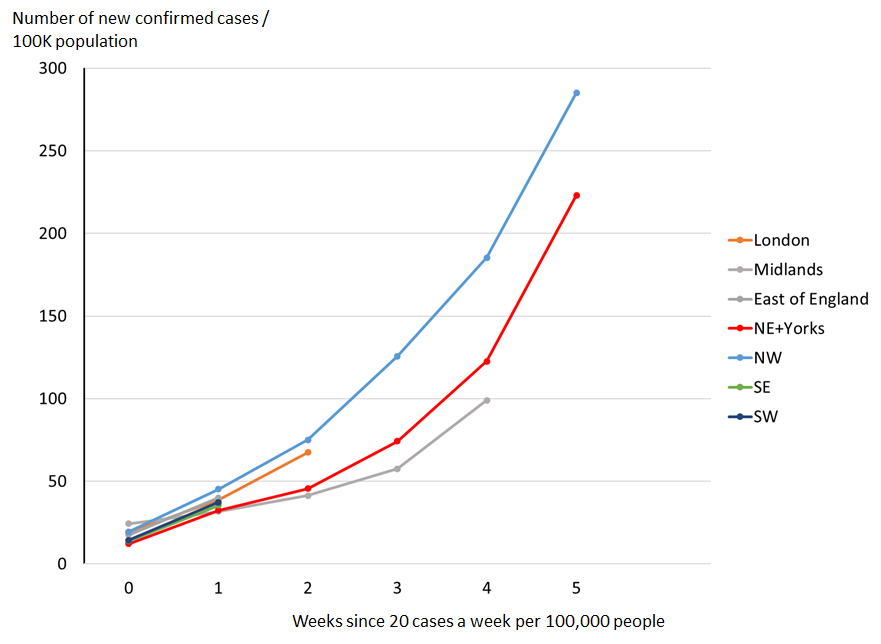
All charts below assume simple exponential growth or decay (based on R) till end Nov. V v simple but illustrate point! I use hospital admissions as not dependent on testing. Back of envelope, don't take numbers literally.
Overall, doubling rate currently about 2 weeks (R=1.3).
Overall, doubling rate currently about 2 weeks (R=1.3).
Plotting hospital admission since September shows this well. If nothing changes to reduce R to less 1.3 we will get to peak April admission rates (~3000/day) by mid November. 
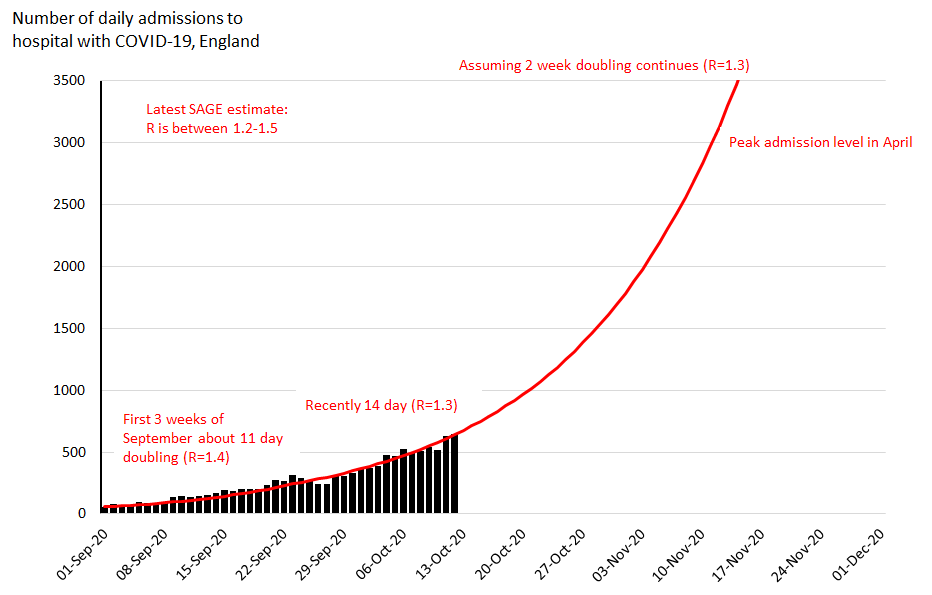
It takes about 2 weeks from infection to hospital admission - almost everyone who will be admitted to hospital over next 2 weeks is *already* infected. The new tiers from Weds will *not* impact admissions for at least 2 weeks. Let's assume (v generous) that they reduce R to 1.1 
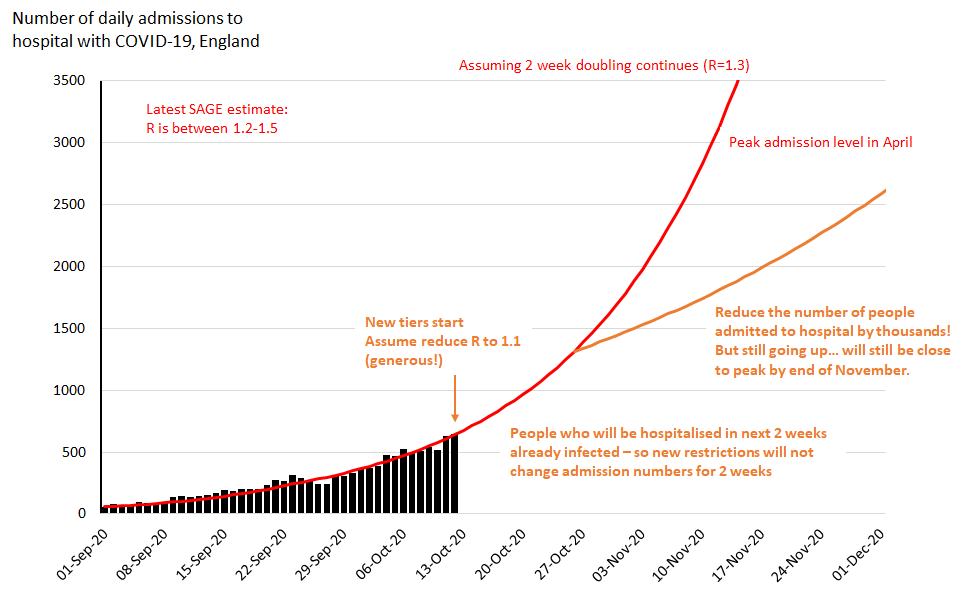
Reducing R to 1.1 will dramatically reduce the number of people admitted to hospital by end November compared to R=1.3 (GOOD). BUT pandemic will still be GROWING and still close to Spring peak (where NHS almost overwhelmed) by end November (BAD)
SAGE estimates closing all hospitality reduces R by 0.1-0.2 & stopping household mixing by 0.1-0.2. NOTE tier 3 does *not* close all hospitality. We could close more things to get R to below 1 (e.g. strict work from home, unis online) AND/OR improve contact tracing.
There are different ways of trying to get R just below 1. Tiers 1 and 2 will NOT be enough (because they already aren't!! R higher than1.2 everywhere inc regions that were already at equiv of tier 2). But let's assume we could do that *yesterday* and get R to 0.9 from now on.
After 2 weeks, you'd start to see new hospital admissions start to drop off but slowly. By end Nov we'd be back to where we were a week ago... but compared to the orange line (assumed current scenario) we'd have saved 34K people from needing hospital (and maybe 5K deaths). 
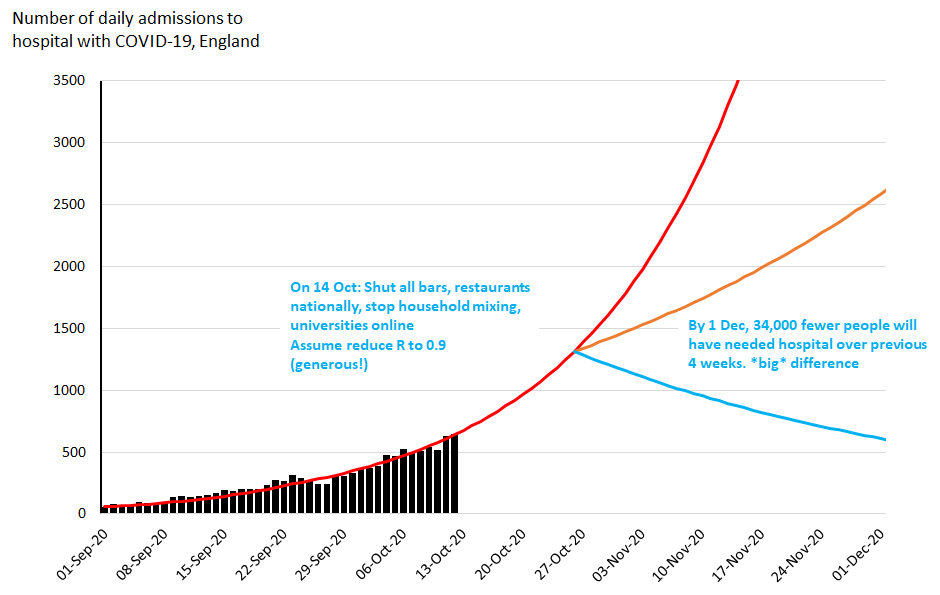
What about a short circuit breaker? This would be March lockdown inc closing schools. A circuit breaker *right now* for TWO weeks (to include half term) & then a situation where R =0.9, we'd be back at mid Sept by end Nov. Approx extra 13K people would be spared hospital. 
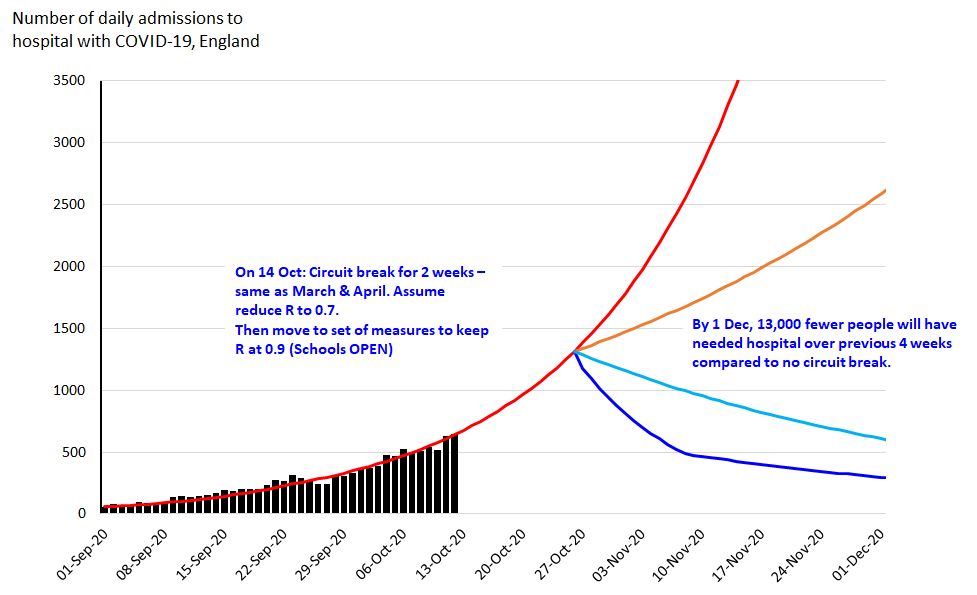
But they didn't do a circuit breaker today. What if they decide to do it in two weeks time? This matters... It will still bring down admissions quickly (after 2 week lag) BUT in meantime an extra approx 21K people will be in hospital compared to starting 2 weeks earlier 
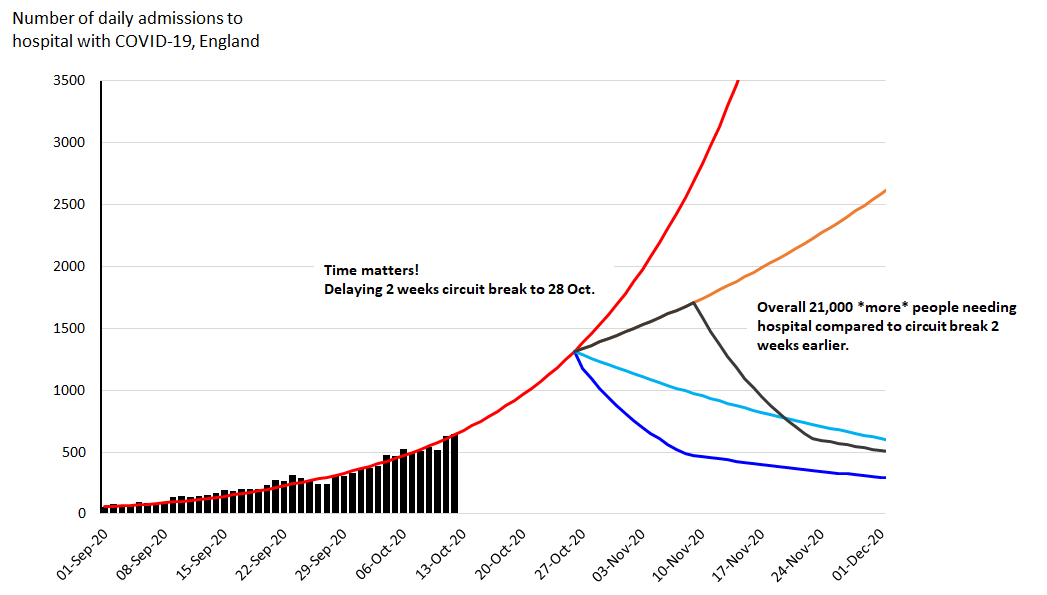
SAGE recommended a circuit breaker followed by combo of better contact tracing & increased restrictions (enough to bring R below 1). Yesterday's paper (bbc.co.uk/news/health-54…) highlighted the impact of waiting to act. NOW is always the best time to do a circuit breaker.
From SAGE table of interventions bit.ly/379CN8I and given R higher than 1.2 despite tier interventions being in place for over 4 weeks , the tiers are v unlikely to be enough get R under 1.
We need to REVERSE growth. We can do this slowly with less pain, or quickly with more pain. Quicker saves more lives. Either will hurt more than current restrictions and waiting is *worst of all*. Fixing testing, tracing, isolation & support will give us MORE options again. END
• • •
Missing some Tweet in this thread? You can try to
force a refresh




